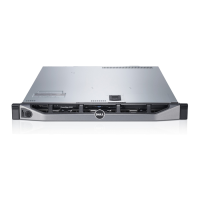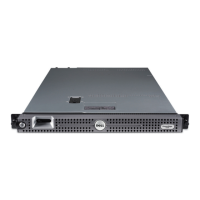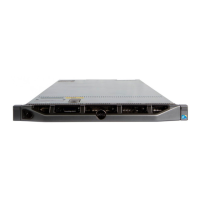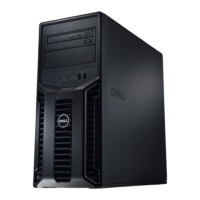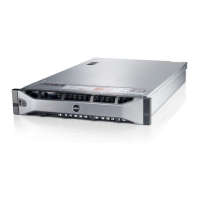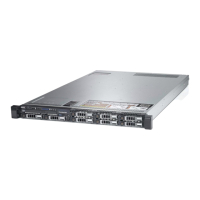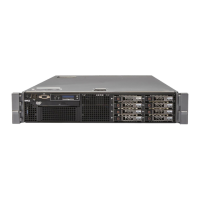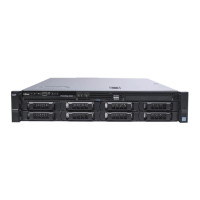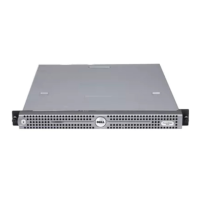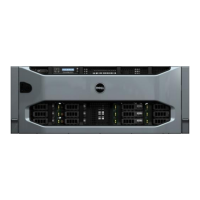Installing a redundant power supply unit
Prerequisites
CAUTION: Many repairs may only be done by a certied service technician. You should only perform troubleshooting and
simple repairs as authorized in your product documentation, or as directed by the online or telephone service and support
team. Damage due to servicing that is not authorized by Dell is not covered by your warranty. Read and follow the safety
instructions that are shipped with your product.
1. Follow the safety guidelines listed in the Safety instructions section.
2. Verify that both power supply units (PSUs) are of the same type and have the same maximum output power.
NOTE: The maximum output power (shown in Watt) is listed on the PSU label.
3. If installed, remove the PSU blank.
Steps
Slide the new PSU into the chassis until the PSU is fully seated and the release latch snaps into place.
Figure 79. Installing a redundant PSU
1.
release latch 2. power connector
3. PSU handle
Next steps
1. If you have unlatched the cable management arm, relatch it. For information about the cable management arm, see the rack
documentation of the system.
2. Connect the power cable to the PSU and plug the cable into a power outlet.
CAUTION: When connecting the power cable, secure the cable with the strap.
NOTE: When installing, hot-swapping, or hot-adding a new PSU in a system with two PSUs, allow several seconds
for the system to recognize the PSU and determine its status. The PSU status indicator turns green to signify that
the PSU is functioning properly.
Related links
Removing the power supply unit blank
Removing the power supply unit blank
Prerequisites
Ensure that you follow the Safety instructions.
118
